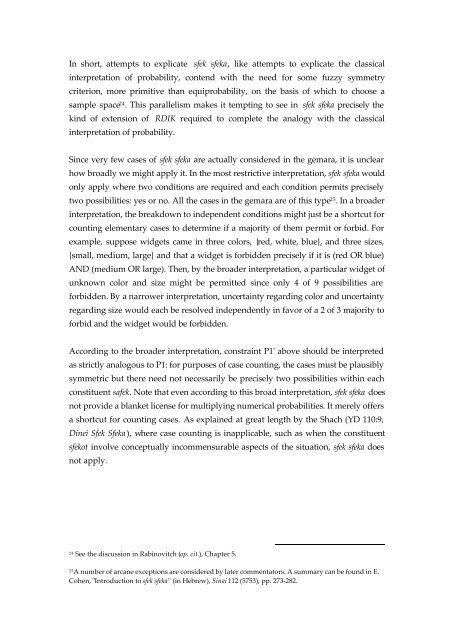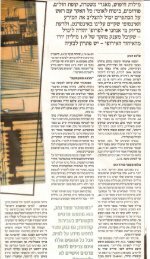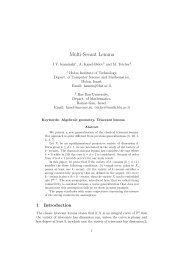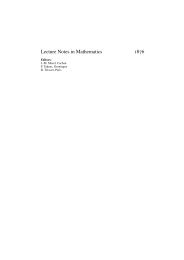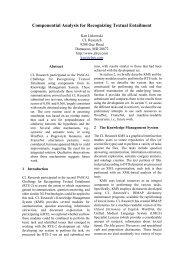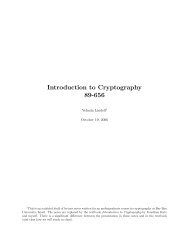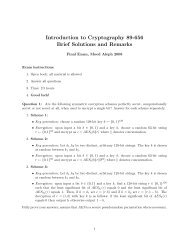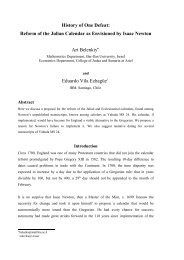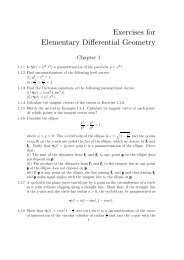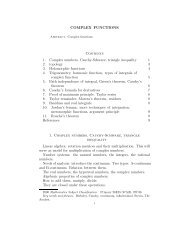Resolving Uncertainty: A Unified Overview of Rabbinic Methods
Resolving Uncertainty: A Unified Overview of Rabbinic Methods
Resolving Uncertainty: A Unified Overview of Rabbinic Methods
You also want an ePaper? Increase the reach of your titles
YUMPU automatically turns print PDFs into web optimized ePapers that Google loves.
In short, attempts to explicate sfek sfeka, like attempts to explicate the classical<br />
interpretation <strong>of</strong> probability, contend with the need for some fuzzy symmetry<br />
criterion, more primitive than equiprobability, on the basis <strong>of</strong> which to choose a<br />
sample space 24 . This parallelism makes it tempting to see in sfek sfeka precisely the<br />
kind <strong>of</strong> extension <strong>of</strong> RDIK required to complete the analogy with the classical<br />
interpretation <strong>of</strong> probability.<br />
Since very few cases <strong>of</strong> sfek sfeka are actually considered in the gemara, it is unclear<br />
how broadly we might apply it. In the most restrictive interpretation, sfek sfeka would<br />
only apply where two conditions are required and each condition permits precisely<br />
two possibilities: yes or no. All the cases in the gemara are <strong>of</strong> this type 25 . In a broader<br />
interpretation, the breakdown to independent conditions might just be a shortcut for<br />
counting elementary cases to determine if a majority <strong>of</strong> them permit or forbid. For<br />
example, suppose widgets came in three colors, {red, white, blue}, and three sizes,<br />
{small, medium, large} and that a widget is forbidden precisely if it is (red OR blue)<br />
AND (medium OR large). Then, by the broader interpretation, a particular widget <strong>of</strong><br />
unknown color and size might be permitted since only 4 <strong>of</strong> 9 possibilities are<br />
forbidden. By a narrower interpretation, uncertainty regarding color and uncertainty<br />
regarding size would each be resolved independently in favor <strong>of</strong> a 2 <strong>of</strong> 3 majority to<br />
forbid and the widget would be forbidden.<br />
According to the broader interpretation, constraint P1' above should be interpreted<br />
as strictly analogous to P1: for purposes <strong>of</strong> case counting, the cases must be plausibly<br />
symmetric but there need not necessarily be precisely two possibilities within each<br />
constituent safek. Note that even according to this broad interpretation, sfek sfeka does<br />
not provide a blanket license for multiplying numerical probabilities. It merely <strong>of</strong>fers<br />
a shortcut for counting cases. As explained at great length by the Shach (YD 110:9,<br />
Dinei Sfek Sfeka ), where case counting is inapplicable, such as when the constituent<br />
sfekot involve conceptually incommensurable aspects <strong>of</strong> the situation, sfek sfeka does<br />
not apply.<br />
24<br />
See the discussion in Rabinovitch (op. cit.), Chapter 5.<br />
25<br />
A number <strong>of</strong> arcane exceptions are considered by later commentators. A summary can be found in E.<br />
Cohen, "Introduction to sfek sfeka" (in Hebrew), Sinai 112 (5753), pp. 273-282.


